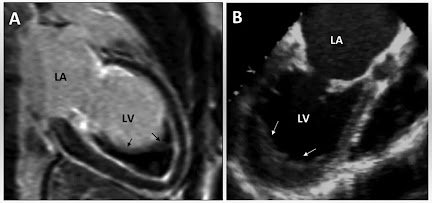Aas_Study
We offer topic-wise short notes and medical books to support medical students in their studies.
Endomyocardial Fibrosis
Endocardial Fibroelastosis
Endocardial Fibroelastosis
 |
| Image source Google |
Cardiac Amyloidosis
Cardiac Amyloidosis: An In-Depth Analysis
Cardiac amyloidosis is a progressive and life-threatening disorder characterised by the deposition of misfolded amyloid fibrils within the myocardium. This pathological protein accumulation results in increased myocardial stiffness, diastolic dysfunction, and, ultimately, heart failure. Due to its nonspecific clinical manifestations, cardiac amyloidosis often remains undiagnosed until advanced stages, highlighting the necessity for heightened clinical awareness and improved diagnostic methodologies.
 |
| Image source Google |
Dilated Cardiomyopathy
Idiopathic Dilated or Congestive Cardiomyopathy: A Comprehensive Guide
Idiopathic dilated or congestive cardiomyopathy is a heart condition that weakens and enlarges the heart muscle, impairing its ability to pump blood effectively. In simple terms, it’s like the heart becoming overstretched and losing its strength, making it harder for the body to receive the oxygen-rich blood it needs. Globally, idiopathic dilated or congestive cardiomyopathy affects millions, with estimates suggesting it accounts for approximately 25% of all cases of heart failure. Its significance lies in its profound impact on life expectancy and quality of life. Patients with idiopathic dilated or congestive cardiomyopathy often face challenges such as fatigue, shortness of breath, and even sudden cardiac arrest if left untreated. Understanding this disease is crucial for early detection and effective management.
 |
| Image source Google |
 |
| Image source Google |
Obstructive Cardiomyopathy
Obstructive Cardiomyopathy: A Comprehensive Overview
Hypertrophic Obstructive Cardiomyopathy (HOCM) is a subtype of hypertrophic cardiomyopathy characterized by abnormal thickening of the myocardium, predominantly affecting the interventricular septum. This hypertrophy can impede blood flow from the left ventricle into the aorta, posing significant hemodynamic challenges. HOCM is a relatively rare disorder, with a prevalence of approximately 1 in 500 individuals, yet its implications for cardiovascular health are profound. Understanding the condition requires a multidisciplinary approach, encompassing insights from genetics, imaging, and interventional cardiology to ensure accurate diagnosis and effective management.
 |
| Image source Google |






